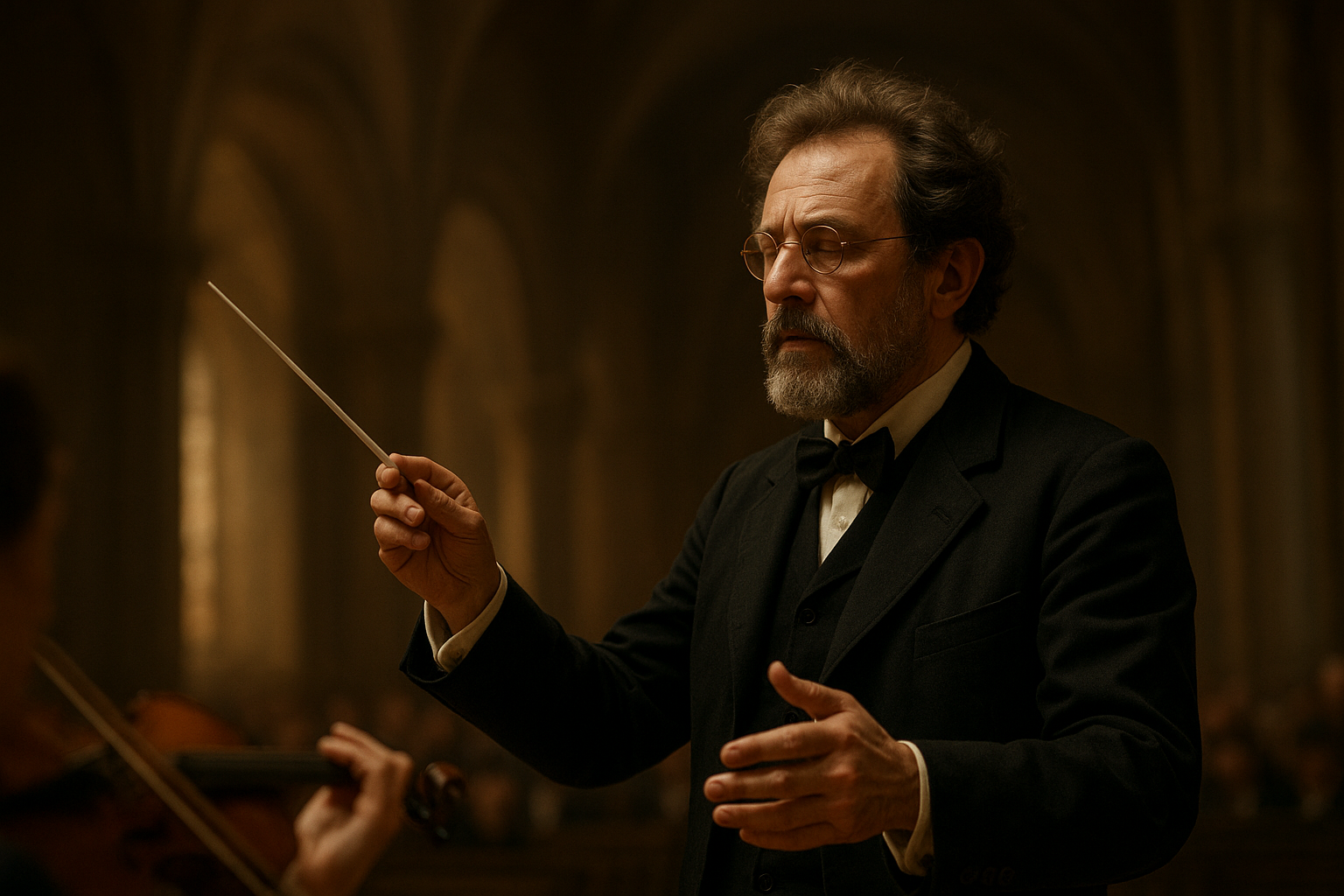The Symphony of the Soul: Exploring Mahler’s Spiritual Journeys
Gustav Mahler, the luminary composer whose works traverse the spheres of earthy earthliness and divine transcendence, is often celebrated as a master of the symphonic form. His music, however, extends beyond mere symphonic structure, serving as a profound exploration into the spiritual and existential realms.
The Early Years: A Foundation of Intrigue
Born in the Kingdom of Bohemia in 1860, Mahler’s early experiences were steeped in a rich cultural tapestry comprised of German, Jewish, and Czech influences. Growing up, Mahler was exposed to the sights and sounds of rural folk music mixed with traditional religious hymns, elements that would later permeate his intricate compositions.
Mahler’s soul-searching nature was rooted firmly in his upbringing. As Britannica notes, “His family’s Judaic roots and diverse socio-cultural experiences in Kaliště contributed significantly to his early compositions.”
Symphony No. 2: The Awakening
“From the heart of the core, a cry from nature that is elicited by the arrow, a means of coming to voice, an expression of trembling existence.” ― Gustav Mahler
Mahler’s exploration of the afterlife, judgment, and ultimate redemption is vividly encapsulated in his “Resurrection Symphony” (Symphony No. 2). In this monumental composition, Mahler weaves the theme of life’s perennial pulsation with echoes of a quest for meaning beyond mortal demise.
The symphony’s final movement delivers a powerful reflection on resurrection and renewal, culminating in a triumphant choral ensemble. “Rise again, yes, you shall rise again, my dust!” the choir exclaims in an exalted embrace of eternal life—seamlessly blending earthy humanity and heavenly aspiration.
The Fifth Symphony: A Love Transcendent
The Fifth Symphony marks another chapter in Mahler’s symphonic odyssey where spiritual and lyrical fervor intertwine. Composed during a time of personal turning points, the symphony is felt as a journey through darkness to the ultimate light in the famous Adagietto movement.
This fourth movement, an ethereal love song, isn’t merely a vehicular passage but encapsulates a transcendent union between Mahler and his beloved Alma Schindler. In listening, one vividly experiences the yearning and pure love—emotive forces coalescing into a spiritual narrative.
“My symphony will be something the world has not yet heard!” Mahler once declared about his work.
The Adagietto was famously interpreted as a love letter, not just to Alma, but to love itself—a testament to the power of beauty that resonates through eternity.
Symphony No. 9: Facing Mortality
The Ninth Symphony, arguably Mahler’s most introspective work, is often viewed as his farewell to life. Composed in the twilight of his life, it confronts mortality with both dread and peace.
Here, Mahler contemplates the finality of all temporal existence. As the symphony unwinds, listeners are drawn into a deep meditation on impermanence. “Perhaps Mahler’s Ninth is an evocation of his own acceptance of mortality,” observes Classic FM.
The final bars fade into silence, capturing the stillness of death yet transcending bleakness through a luminous acceptance. The Ninth is lauded for its poignant nature, not as a somber end but rather the dawn of something undefined.
Legacy: A Spiritual Conductor
Gustav Mahler’s music continues to resonate globally not just as symphonic oeuvre, but as a spiritual guide that examines, questions, and reflects profound human experiences.
His symphonies serve as timeless spiritual conversations that continue to inspire introspection and exploration of the human condition. As eloquently put by The Guardian, “These symphonies are a monument to the spirit’s tenacity in the face of despair.”
- Connection to Nature: Much of Mahler’s music reflects his deep connection to the natural world and its spiritual symbiosis.
- Diverse Influences: His compositional style was a melange of Austrian folk tunes, Jewish liturgical chants, and classical symphonic structures.
- Personal Growth and Reflection: Through his symphonies, Mahler laid bare his innermost thoughts, fears, and spiritual quest for enlightenment.
Mahler’s symphonic legacy remains an eternal dialogue—a symphony of the soul—that reverberates with a timeless spiritual resonance.
